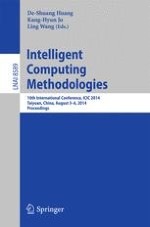This book – in conjunction with the volumes LNCS 8588 and LNBI 8590 – constitutes the refereed proceedings of the 10th International Conference on Intelligent Computing, ICIC 2014, held in Taiyuan, China, in August 2014. The 85 papers of this volume were carefully reviewed and selected from numerous submissions. The papers are organized in topical sections such as soft computing; artificial bee colony algorithms; unsupervised learning; kernel methods and supporting vector machines; machine learning; fuzzy theory and algorithms; image processing; intelligent computing in computer vision; intelligent computing in communication networks; intelligent image/document retrievals; intelligent data analysis and prediction; intelligent agent and Web applications; intelligent fault diagnosis; knowledge representation/reasoning; knowledge discovery and data mining; natural language processing and computational linguistics; next gen sequencing and metagenomics; intelligent computing in scheduling and engineering optimization; advanced modeling, control and optimization techniques for complex engineering systems; complex networks and their applications; time series forecasting and analysis using artificial neural networks; computer human interaction using multiple visual cues and intelligent computing; biometric system and security for intelligent computing.
